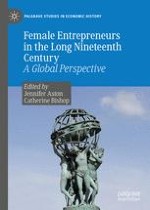2020 | OriginalPaper | Chapter
11. Japanese Female Entrepreneurs: Women in Kyoto Businesses in Tokugawa Japan
Author : Mary Louise Nagata
Published in: Female Entrepreneurs in the Long Nineteenth Century
Publisher: Springer International Publishing
Activate our intelligent search to find suitable subject content or patents.
Select sections of text to find matching patents with Artificial Intelligence. powered by
Select sections of text to find additional relevant content using AI-assisted search. powered by
